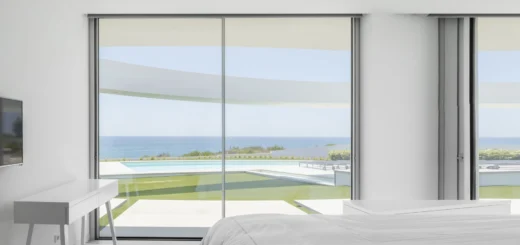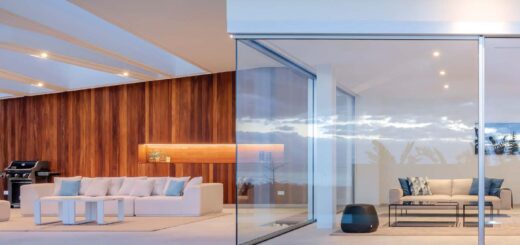Home Office Sliding Doors: Style & Layout Ideas
Table of Contents
Home Office Sliding Door Types & Materials
Modern home office sliding doors come in diverse styles that shape how your workspace looks and functions. Glass, aluminium, and wooden options each bring distinct qualities to premium door systems, particularly in rooms where light control and acoustics matter.
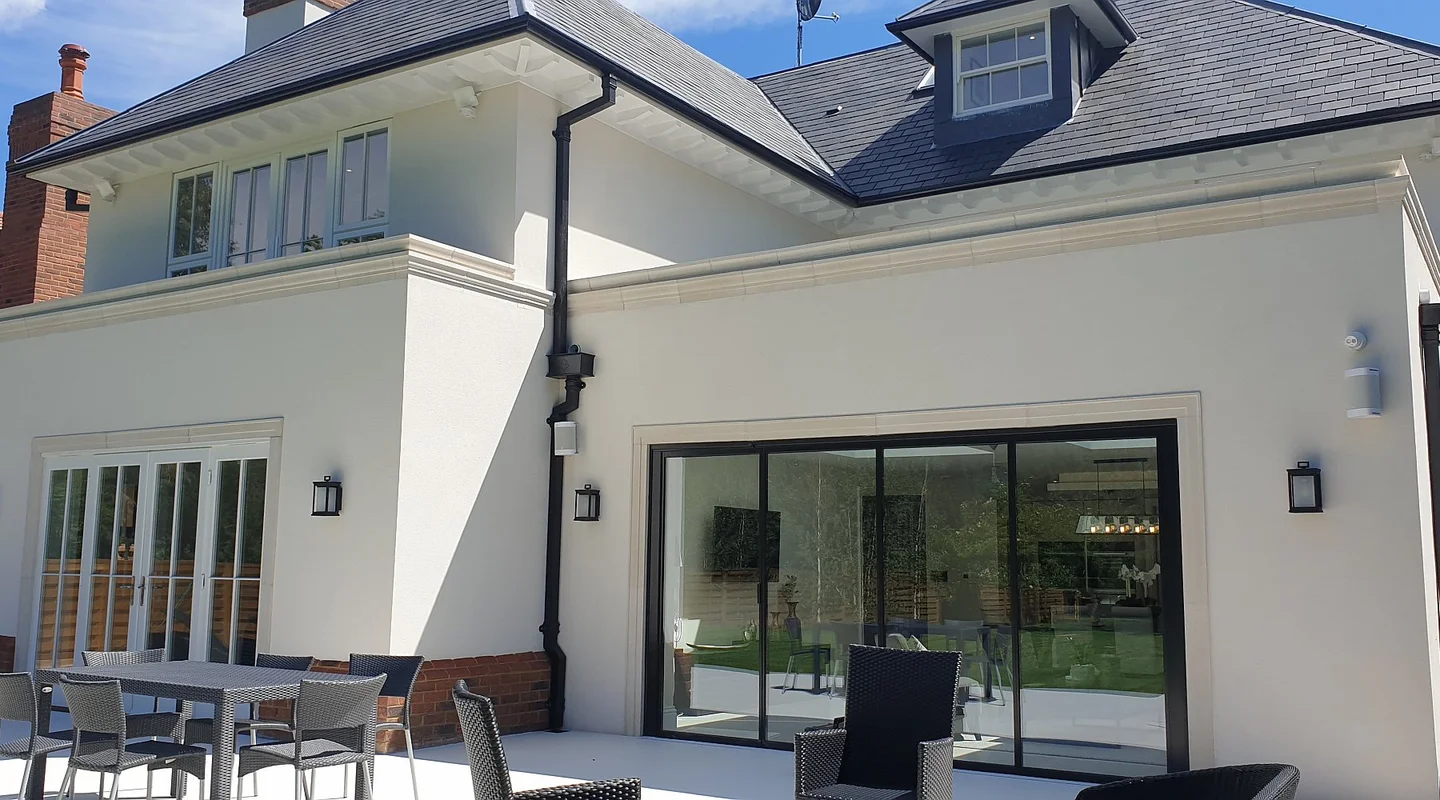
Glass Panel Options for Maximum Light
Home office sliding glass doors range from ultra-clear to subtly tinted panels. Toughened safety glass, the standard for office installations, withstands daily use while maintaining crystal clarity. Low-iron glass removes the slight green tinge found in standard glass, making it ideal for modern workspace designs where true colour reproduction matters.
Breaking from traditional clear panels, reeded glass offers texture and partial privacy without blocking light. Sandblasted and acid-etched finishes provide varying degrees of obscurity – perfect for hiding storage areas or creating focus zones in larger spaces.
Frameless vs Framed Systems
Frameless glass panels create uninterrupted views in multi-functional spaces. Mounted on discrete top tracks, these systems appear to float. Framed options provide extra stability and improved acoustic properties – vital for video calls and concentration. Powder coated aluminium doors in matte black or brushed steel complement both contemporary and traditional office furniture.
Track Systems Explained
Sliding mechanisms vary based on panel weight and size. Bottom-rolling tracks suit heavier wooden doors, while top-hung systems work well for glass panels. Dual-track designs let panels stack neatly, saving space when fully opened. Soft-close mechanisms prevent slamming and protect fingers during busy workdays.
Smart Ways to Zone Your Home Office with Sliding Doors
Working from home demands spaces that adapt to your changing needs throughout the day. Home office sliding doors let you create distinct zones while maintaining an open feel when needed.
Between-Room Dividers
Sliding internal doors with glass panels provide excellent sound dampening between work and living areas. Clear glass maintains visual connection with the rest of your house, while frosted sections offer privacy during video calls. Double-track systems let you close off your workspace completely or partially open it to adjacent rooms.
By installing home office sliding doors between your desk area and the rest of the house, you establish clear boundaries that help maintain work-life balance. Integrated whiteboards or magnetic glass surfaces add practicality, turning your door into an extra planning space.
A popular choice for dividing spaces involves using pocket doors that slide into wall cavities, saving valuable floor space when open. Corner sliding doors work especially well in L-shaped rooms, creating a touch of sophistication while defining separate areas for focused work and informal meetings.
Creating Quiet Focus Areas
Glass partitions with acoustic interlayers reduce noise by up to 45 decibels. Home office sliding doors equipped with brush seals and rubber gaskets prevent sound from travelling between zones. Double-glazed panels provide extra sound insulation without compromising on natural light.
Your office space benefits from adjustable privacy options. Switchable smart glass changes from clear to opaque at the press of a button, perfect for alternating between collaborative and concentrated work modes. Manual blinds integrated within double-glazed panels offer another way to control visibility.
Sound Management Features
High-performance sliding home office doors incorporate multiple sound-reducing features. Laminated acoustic glass sandwiches a special polymer layer between glass sheets, dampening vibrations. Brush pile seals along the tracks absorb noise, while soft-close mechanisms eliminate disruptive door sounds.
Storage Integration Ideas
Built-in shelving around sliding door frames makes use of otherwise wasted wall space. Floor-to-ceiling units can incorporate filing cabinets below and display shelves above, with the sliding door track mounted at the optimal height for easy access.
Sliding doors themselves can include integrated storage. Magnetic glass surfaces hold documents and notes, while wooden doors might feature shallow shelving or document pockets on their room-facing side. Some home office sliding doors come with built-in cable management channels, keeping power and data cables tidy.
Adaptable Workspace Layouts
L-shaped configurations of home office sliding doors create separate zones for different tasks. A quiet corner for focused work pairs well with a more open area for collaborative projects. Top-hung systems allow for smoother operation and prevent dust accumulation in floor tracks.
Multi-panel systems stack against walls when fully opened, letting you adjust the space according to your daily needs. Three-panel configurations provide flexibility – use one panel for privacy during calls while keeping the rest open for light and airflow.
Home Office Sliding Door Design Inspiration
Modern designs for home office sliding doors strike a balance between practicality and style. Clean lines, minimal hardware, and carefully chosen materials create workspaces that feel professional yet personal.
Glass Panel Combinations
Mixed glass types within a single door system add visual interest and practical benefits. Clear panels maintain sight lines while frosted sections provide selective privacy. Home office sliding doors with acid-etched patterns or gradients offer a subtle way to break up large glass expanses.
Coloured glass brings personality to contemporary spaces without overwhelming them. Neutral tints in grey or bronze complement most colour schemes, while bold blue or green panels make striking feature walls. In tight spaces, mirrored panels reflect light and create an illusion of depth.
Custom designs might combine different glass finishes in vertical sections. The lower portion could use frosted glass to hide desk clutter, while the upper section remains clear to preserve views and light flow. Textured glass patterns add subtle detail without drawing attention away from key design elements.
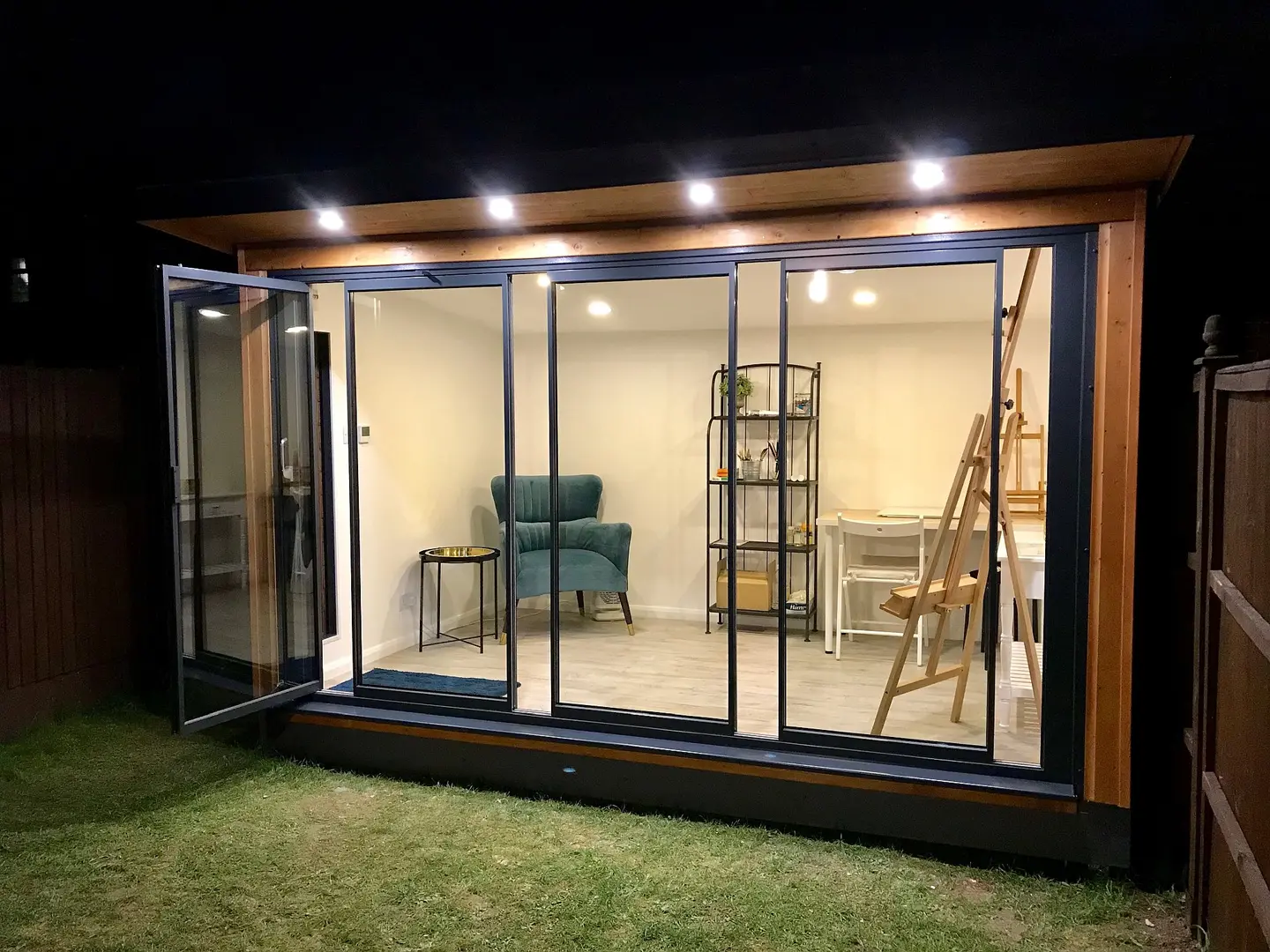
Modern Minimalist Approaches
Large sliding doors with slim frames keep the focus on clean lines and uncluttered surfaces. Black-framed glass panels create dramatic contrast against light walls, while white or silver frames disappear into neutral colour schemes. Hidden tracks and flush handles maintain sleek profiles.
Home office sliding glass doors in minimalist designs often feature edge-to-edge glass with barely visible joins. Frameless systems mounted on discrete top tracks appear to float in space. Clear glass increases natural light penetration while maintaining definite boundaries between work and living areas.
Frame Details
Minimal frame profiles don’t mean compromising on strength. Modern aluminium extrusions provide rigidity while maintaining slim sightlines. Concealed rollers and soft-close mechanisms hide the practical elements behind clean design.
Traditional Office Adaptations
Period properties need home office sliding doors that respect original features. Wooden frames painted to match existing joinery maintain character while adding modern convenience. Traditional panel designs updated with glass inserts strike a balance between old and new.
Georgian-style glazing bars applied to sliding glass panels reference historical window patterns. Antique brass or bronze hardware adds warmth to contemporary door systems. Panelled wooden doors with inset glass sections prove a practical solution for heritage homes.
Mixed Material Innovation
Natural materials bring warmth to sleek home office design. Timber frames paired with glass create depth and interest. Raw steel frames with exposed welds and patinated finishes add industrial character to modern workspaces.
Mixing materials within individual panels offers creative possibilities. Glass sections might sit alongside wooden panels, or metal mesh could provide screening while maintaining airflow. Home office sliding doors that combine different textures and surfaces create visual interest without busy patterns.
Copper or brass inlays in wooden frames catch light and add subtle detail. Metal-framed glass doors with wooden handles bring tactile warmth to touch points. Perforated metal panels offer partial screening while allowing light through in interesting patterns.
Practical Layout Tips for Home Office Sliding Doors
Planning your door placement shapes how you’ll use your workspace every day. Home office sliding doors need careful positioning to control light, manage noise, and define separate zones effectively.
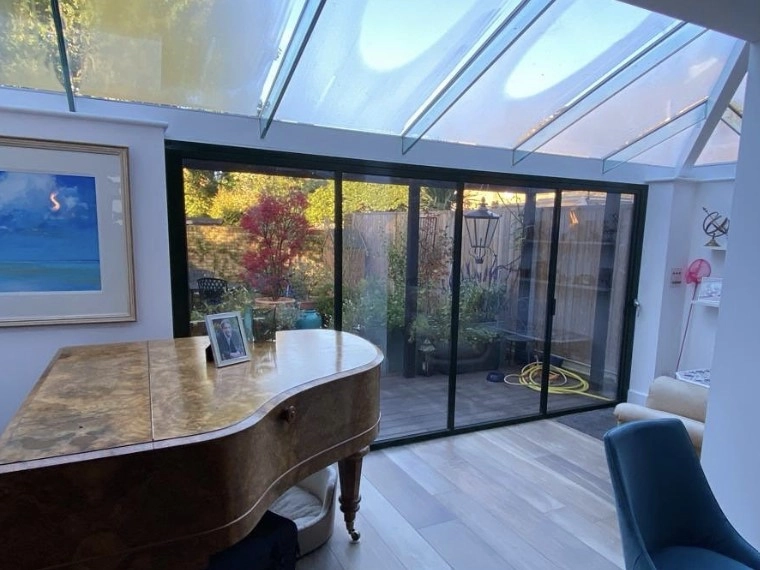
Light Flow Planning
Morning sunlight streams differently through east-facing home office sliding doors compared to those facing west. North-facing panels provide steady, indirect light ideal for computer work. South-facing glass might need solar control coatings or adjustable shading to prevent glare on screens.
Placing sliding home office doors opposite windows creates a path for natural light to reach deeper into your space.
Light levels change throughout the day, so observe your room at different times before fixing door positions. Reflective surfaces near glass panels help bounce daylight into darker corners.
Glass placement above desk height lets natural light flow while providing privacy where needed. Home office sliding doors with split-level panels offer flexibility – clear glass above for light, frosted below for privacy. High-level glazing draws the eye upward, making compact offices feel more spacious.
Space-Saving Configurations
Custom made sliding doors open up possibilities in awkward spaces. Pocket systems that slide into wall cavities free up valuable wall space for storage or displays. Corner-meeting doors make the most of L-shaped rooms, opening up or closing off sections as needed.
Sliding home office doors mounted on curved tracks create gentle transitions between areas. Bi-parting systems split in the middle, requiring less clearance than single sliding panels. Stack-away configurations fold multiple panels neatly to one side, ideal when you need to open the entire space.
Track System Options
Wall-mounted tracks suit solid walls, while ceiling fixings work well with glass partitions. Some home office sliding doors use bottom rollers for extra stability, particularly useful for larger panels. Hidden tracks recessed into ceilings maintain clean lines while providing smooth operation.
Multi-Purpose Room Ideas
Movable panels create a cosy atmosphere when needed without permanent barriers. Home office sliding glass doors let you section off work areas during office hours, then open them up for family time. Double-track systems allow partial opening – useful for ventilation or passing documents while maintaining acoustic separation.
Glass partitions near seating areas maintain social connection while dampening noise. Sliding panels between desks and dining spaces clearly mark boundaries between work and home life. Mobile office pods formed by sliding walls provide extra flexibility in shared spaces.
Adaptable Layouts
L-shaped arrangements of sliding home office doors create natural break-out spaces. U-shaped configurations wrap around desk areas, providing sound insulation without claustrophobia. Straight runs of panels divide larger rooms while maintaining sight lines.
Staggered panel arrangements add visual interest and practical benefits. Overlapping glass sections reduce sound transmission between zones. Offset door positions create small lobby spaces – useful for temporary storage or quick wardrobe changes between video calls.
Different panel widths within the same system offer varied opening options. Wider sections provide generous access, while narrower panels work well for occasional use. Mixed panel sizes let you prioritise opening widths where you need them most.
Home Office Sliding Door Features for Productivity
Specific features of home office sliding doors directly influence your daily work routines. Well-chosen designs can improve focus, reduce distractions, and support better working habits.
Creating Privacy
Smart glass technology in home office sliding doors switches from clear to opaque instantly. This advanced glazing responds to electrical current, letting you adjust privacy levels without blinds or curtains. Remote controls or smartphone apps make quick adjustments simple during video calls.
Printed interlayer films sandwiched between glass panels create permanent privacy zones. Gradients fade from clear to opaque, while geometric patterns add visual interest. Home office sliding glass doors with selective privacy coating maintain views out while preventing others from seeing in.
Different glass types suit varying privacy needs. Acid-etched panels diffuse light while obscuring views. Directional privacy glass appears clear when viewed straight-on but becomes opaque at angles – ideal for office setups where you need to see out but want to limit visibility from passing areas.
Sound Management
Acoustic ratings for home office sliding doors range from basic to professional studio grade. Double-glazed panels with varied glass thicknesses break up sound waves effectively. Specialised interlayers absorb vibrations, reducing noise transfer between spaces.
Brush seals along tracks and meeting stiles prevent sound leakage through gaps. Multi-point locking systems compress gaskets evenly, maintaining consistent acoustic performance. Home office sliding doors with bottom drops seals eliminate cold spots under panels while blocking sound transmission.
Flexible Access Options
Sliding home office doors on parallel tracks provide multiple access possibilities. Panels can stack behind one another or park at opposite ends. Pass doors within larger sliding systems offer quick entry without moving main panels.
Touch-open systems need only gentle pressure to operate. Motorised options link to smart home systems, adjusting automatically based on time of day or occupancy. Sliding tracks with soft-close dampeners prevent slamming and protect fingers during busy workdays.
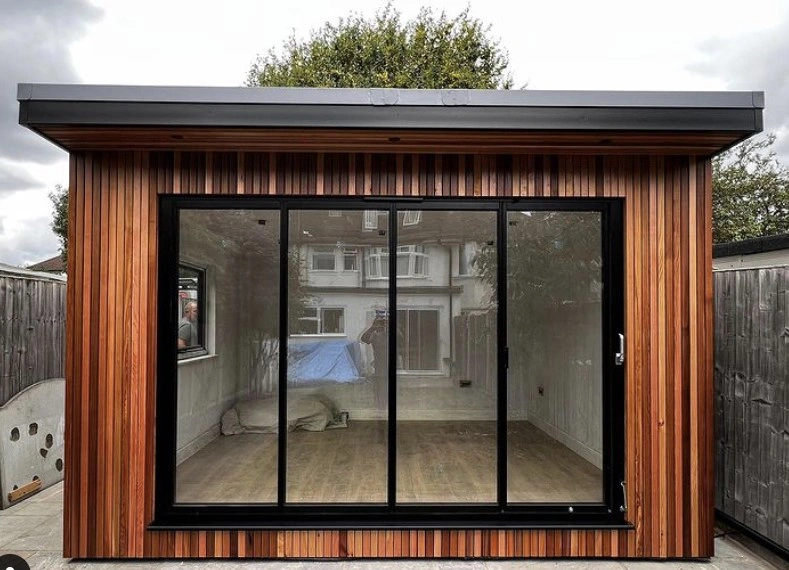
Natural Light Benefits
Glass specifications in home office sliding doors determine how sunlight enters your workspace. Low-iron glass removes the green tinge found in standard float glass, providing true colour rendition – essential for creative work.
Anti-reflective coatings on glass panels reduce glare on screens. These microscopic layers cut reflection by up to 90%, improving visibility through glass while reducing eye strain. Specialist glass treatments can block harmful UV rays without darkening the space.
Light-directing glass channels daylight deeper into rooms. Micro-prisms within the glass redirect sunlight upward, improving natural illumination at desk level. Home office sliding doors with varied glass types can target light where needed while controlling glare in screen areas.
Automation and Control
Modern sliding systems integrate with building management controls. Motion sensors trigger lighting changes when doors open. Environmental monitors adjust ventilation based on occupancy and air quality readings.
Smart locks on home office sliding doors link to security systems. Fingerprint readers or keypad entry maintain security while allowing quick access. Automated systems can secure all panels simultaneously at day’s end.
About SunSeeker Doors
With over 20 years of experience, SunSeeker Doors remains at the forefront of door design with our quality-tested patio doors and related products, including the bespoke UltraSlim aluminium slide and pivot door system, Frameless Glass Doors, and Slimline Sliding Glass Doors. All of our doors are suitable for both internal and external use.
To request a free quotation, please use our online form. You may also contact 01582 492730, or email info@sunseekerdoors.co.uk if you have any questions.



